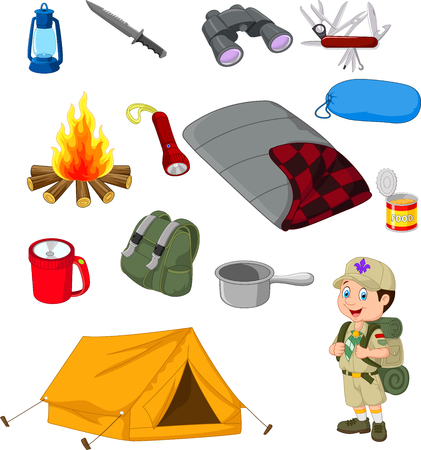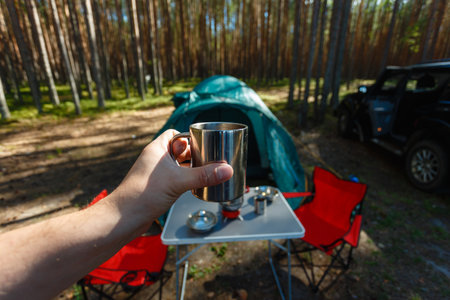1. Understanding the Uniqueness of Desert Ecosystems
Desert landscapes are far more than endless stretches of sand and dramatic rock formations—they are complex, living ecosystems that thrive under some of the harshest conditions on Earth. While their vast, open beauty invites exploration, it’s crucial to recognize how incredibly fragile these environments are. Unlike forests or grasslands, desert soils are often held together by thin biological crusts—delicate networks of mosses, lichens, and microbes that can take decades to recover if disturbed. Likewise, desert plants grow slowly and struggle to regenerate once trampled or uprooted. Because rainfall is scarce and conditions are extreme, every footprint, tire track, or off-trail adventure can leave lasting scars on the landscape. Preserving these ecosystems isn’t just about keeping them beautiful for photos—it’s about protecting habitats for wildlife, maintaining natural processes, and ensuring future generations can experience the quiet magic of America’s deserts. Understanding this delicate balance is the first step in embracing Leave No Trace principles and respecting the unique spirit of the desert.
2. Why Leave No Trace Matters More in the Desert
The desert is a landscape defined by its extremes—scorching days, chilly nights, and an ecosystem finely balanced on the edge of survival. While these environments may appear rugged and resilient at first glance, they are actually some of the most fragile places on earth. Following Leave No Trace principles in arid regions isn’t just recommended; it’s absolutely vital. Unlike forests or grasslands, deserts recover from disturbance at an astonishingly slow pace, sometimes taking decades or even centuries to heal from a single footprint or misplaced tent.
Fragility of Desert Ecosystems
Desert soils often contain cryptobiotic crusts—a living layer of microorganisms that holds the soil together, retains moisture, and prevents erosion. These crusts are easily crushed underfoot or by vehicle tires, leading to increased dust storms, loss of native plants, and the invasion of non-native species. The scarcity of water means that even small disturbances can have outsized impacts on plant life and animal habitats.
Lasting Impacts of Small Disturbances
| Action | Potential Impact in Desert | Estimated Recovery Time |
|---|---|---|
| Stepping off trail | Damages cryptobiotic soil crusts | 50-250 years |
| Improper waste disposal | Contaminates limited water sources; harms wildlife | Years to never (depending on waste type) |
| Picking wildflowers/plants | Removes crucial food and shelter for animals; affects regeneration | Years to decades |
| Campfire scars | Permanently alters soil chemistry and appearance; kills seeds/roots beneath fire ring | Decades to centuries |
The Importance of Mindful Exploration
A single careless step can unravel centuries of natural development in the desert. This makes the practice of Leave No Trace not just a personal ethic but a community responsibility. When we minimize our impact, we help preserve these breathtaking landscapes so that future generations can experience their stark beauty and quiet solitude. In desert environments, every decision—where you walk, how you camp, what you leave behind—carries extra weight. Treat these spaces with reverence: tread lightly, respect boundaries, and remember that even the smallest actions matter here more than almost anywhere else.

3. Minimizing Surface and Soil Impact
When exploring the American desert, it’s crucial to recognize that every step you take has the potential to leave a lasting mark—especially on fragile soils like cryptobiotic crusts. These dark, knobby patches are actually living communities of lichens, mosses, and cyanobacteria that play a vital role in holding the desert floor together and preventing erosion. Once damaged, they can take decades or even centuries to recover. To truly embody Leave No Trace principles, make it your mission to minimize your impact on these delicate surfaces.
Stick to Established Trails
One of the most effective ways to protect desert soil is by staying on designated trails. Even if the path seems less scenic or winds a bit out of your way, resist the urge to cut switchbacks or forge new routes across open ground. Trails are thoughtfully designed to concentrate foot traffic and minimize widespread damage, so following them helps preserve vast stretches of untouched landscape.
Choose Durable Surfaces for Campsites
When it’s time to set up camp, look for previously established sites or areas with hard-packed sand, gravel, or rock. Avoid pitching tents on vegetated patches or cryptobiotic crusts—even small disturbances can lead to long-term harm. If there are no clear camping spots, opt for places that show obvious signs of repeated use rather than starting a new site.
Practical Tips for Desert Travelers
- Travel in small groups whenever possible to reduce cumulative impact.
- If you must venture off trail (for example, for bathroom breaks), walk in single file and spread out your steps over durable surfaces like slickrock.
- Educate fellow adventurers about the importance of protecting soil crusts—they’re easy to overlook but irreplaceable once destroyed.
By making mindful choices about where you walk and camp, you not only preserve the unique beauty of America’s deserts but also safeguard their ecological integrity for generations of explorers yet to come.
4. Dealing with Waste Responsibly
When exploring desert landscapes, how we manage waste—both human and pet—directly impacts these fragile ecosystems. Desert soils are slow to decompose organic matter, and leaving waste behind can disrupt plant life, pollute water sources, and harm wildlife. Practicing Leave No Trace in desert environments means planning ahead and committing to responsible waste disposal.
Human Waste: Best Practices
In many U.S. desert areas, the standard is to pack out all human waste, especially in popular or sensitive spots where decomposition is virtually nonexistent. Portable toilet systems (like wag bags or bucket toilets) are often required by land management agencies. These solutions seal waste securely for easy transport and later disposal in proper facilities.
Human Waste Disposal Guidelines
| Practice | Description | Why It Matters |
|---|---|---|
| Pack It Out | Use portable toilets or waste bags to remove all waste from the site. | Prevents contamination of soil and water, keeps sites clean for others. |
| Catholes (Only if Permitted) | If packing out isn’t possible and local rules allow, dig a 6-8 inch deep hole at least 200 feet from water, trails, and campsites. | Minimizes environmental impact but not suitable for most deserts. |
| No Trace Left Behind | Never leave toilet paper or hygiene products; pack them out in a sealed bag. | Avoids litter and non-biodegradable waste buildup. |
Pet Waste: Don’t Forget Fido!
Packing out pet waste is just as essential as managing your own. Pet feces can introduce harmful bacteria and nutrients into delicate habitats, disrupting the balance. Bring plenty of doggie bags and always dispose of them properly—never leave bagged waste along the trail or under rocks.
Tips for Responsible Pet Waste Management
- Carry extra waste bags and check local regulations regarding pets on trails.
- Double-bag waste if needed, especially on multi-day trips in remote areas.
- If packing out isn’t feasible due to length of stay or number of pets, seek out designated pet relief stations when available.
Packing Out Trash: A Non-Negotiable Rule
The “Pack It In, Pack It Out” mantra is crucial in the desert. Even small bits of trash—food wrappers, fruit peels, cigarette butts—take years to break down in arid climates. Always carry a trash bag in your pack and do a sweep of your campsite before leaving. If you spot litter left by others, consider picking it up to help restore the landscape’s natural beauty.
5. Respecting Wildlife and Native Plants
Desert environments are home to an incredible array of wildlife and native plants, many of which are uniquely adapted to thrive in such harsh conditions. As visitors, it’s essential to observe these living wonders responsibly and with care. One of the core Leave No Trace principles is to admire wildlife from a respectful distance. Use binoculars or a camera lens to get a closer look instead of approaching animals directly. Getting too close can cause stress, disrupt their natural behaviors, or even endanger their survival—especially during the hottest hours when energy conservation is crucial.
Similarly, desert vegetation deserves our utmost respect. Many desert plants grow slowly, some taking decades—or even centuries—to mature. Seemingly harmless actions like picking wildflowers, breaking off branches, or trampling through fragile ground cover can leave scars that last for generations. Stick to established trails and durable surfaces whenever possible, and encourage others in your group to do the same. Refrain from collecting rocks, seeds, or flowers as souvenirs; instead, capture memories with photos and leave what you find for others to enjoy.
By being mindful stewards of both wildlife and native plants, we help ensure that these delicate ecosystems remain vibrant for future generations. Every thoughtful choice we make in the desert—from where we walk to how we observe—has a lasting impact on its fragile beauty.
6. Campfire Alternatives and Fire Safety
Choosing Stoves Over Open Fires
In the fragile beauty of desert landscapes, the impact of a single campfire can last for decades. The harsh, arid environment means that vegetation recovers slowly, and blackened scars from fires may remain for generations. That’s why it’s essential to embrace camp stoves as your go-to cooking method when exploring these delicate ecosystems. Portable stoves not only leave no trace but also offer a safer, more efficient way to prepare meals without risking damage to the land or igniting unintended wildfires.
Understanding Desert Fire Risks
Desert environments are notoriously dry, and even a light breeze can quickly turn a small spark into a dangerous wildfire. Low humidity, gusty winds, and flammable plant matter combine to make open flames particularly hazardous here. Because of these conditions, many public lands across the American Southwest strictly regulate or prohibit campfires—especially during peak fire season. Always check local regulations before you head out, and be prepared to adapt your plans.
Fire Safety Tips for Dry, Windy Conditions
- Use a windscreen with your stove to prevent accidents.
- Set up your cooking area on bare soil or gravel, away from vegetation and overhanging branches.
- Keep water or sand nearby to douse accidental flames immediately.
- Never leave any flame—open or contained—unattended, even for a moment.
Leave No Trace: Protecting Fragile Ecosystems
By choosing modern camp stoves and practicing strict fire safety, you help preserve the raw beauty of America’s deserts for future generations. Remember: in these sensitive landscapes, the best fire is often no fire at all. Your thoughtful choices ensure that the magic of the desert endures, unspoiled and wild.
7. Cultural and Historical Site Protection
Desert landscapes across the United States are home to not only breathtaking natural features but also invaluable cultural and historical sites. These areas often contain traces of ancient civilizations, sacred Indigenous lands, petroglyphs, historic homesteads, and artifacts that connect us to the past. As visitors, it’s essential to approach these spaces with deep respect and a commitment to preservation.
Respecting Indigenous Heritage
Many desert regions are the ancestral homelands of Native American tribes whose traditions and spiritual beliefs remain closely tied to the land. When exploring, always be mindful of markers, signs, or structures indicating sacred sites. Avoid entering restricted areas or touching ceremonial objects, and remember that what may appear as a simple stone circle or pottery shard could hold profound meaning for local communities.
Preserving Historical Artifacts
Artifacts such as arrowheads, pottery fragments, mining equipment, and even old graffiti tell the story of those who came before us. It can be tempting to pick up a unique find or photograph yourself with these relics, but removing or disturbing them erases history for future generations. The Leave No Trace principle urges you to leave everything as you found it—observe with your eyes, not your hands.
How You Can Help Protect These Places
If you come across a cultural site or artifact:
- Do not touch, move, or take any objects.
- Stay on established trails and avoid walking through ruins or sensitive areas.
- Report significant finds to local land managers—they can ensure proper protection.
- Educate friends and family about the importance of stewardship in desert environments.
By respecting the fragile balance of desert ecosystems and honoring the cultural significance embedded in these landscapes, we become responsible stewards who help preserve America’s shared heritage. Your thoughtful actions today make it possible for others to connect with both nature and history tomorrow.


